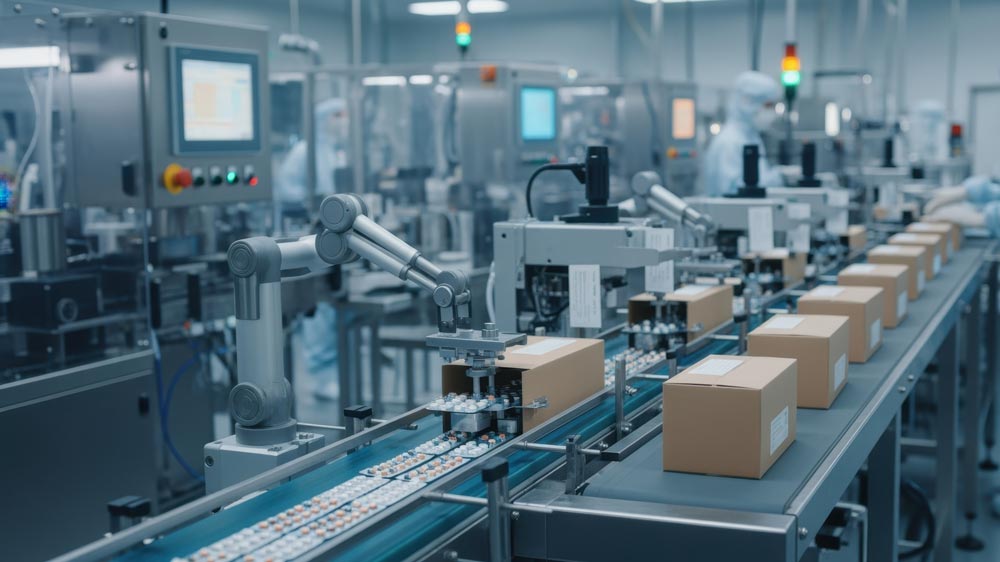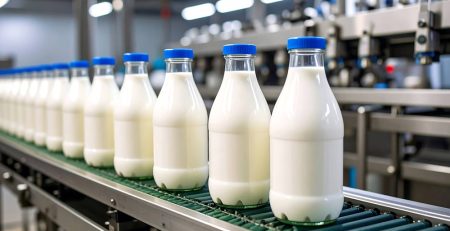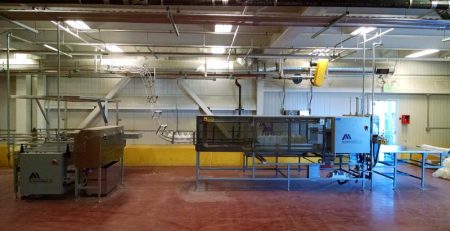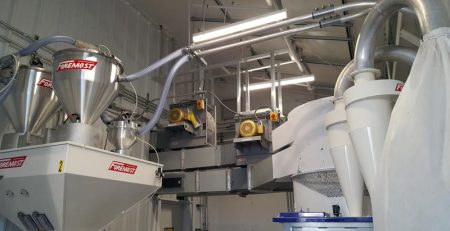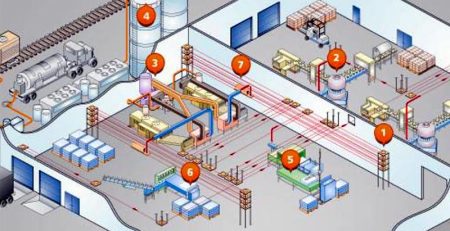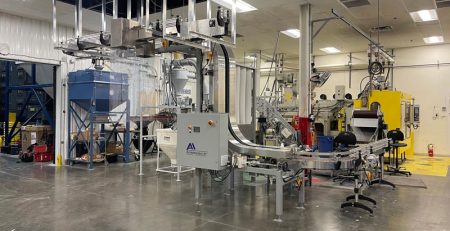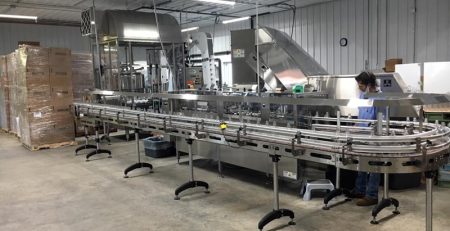As the year winds down and capital budgets come into focus, plant managers and engineering teams face a critical window of opportunity: planning packaging line upgrades that will drive operational improvements in 2026 and beyond. Whether you’re looking to boost throughput, reduce labor costs, improve quality, or prepare for new product formats, year-end is the perfect time to align strategic goals with practical .
But successful upgrades require more than just spending leftover budget. It takes a thoughtful, data-driven approach to identify the most impactful areas of improvement, minimize disruption, and future-proof your production line. This guide outlines the key factors to consider when planning packaging line upgrades before the year closes out.
1. Define Your Automation and Production Goals
Before you begin sourcing equipment or redesigning layouts, clarify your overarching objectives. What do you hope to accomplish with your upgrade?
Some common goals include:
- Increasing line speed or overall throughput
- Reducing labor dependency through automation
- Minimizing changeover time between SKUs
- Improving quality control and consistency
- Enhancing workplace safety and ergonomics
- Adapting to new packaging formats or container sizes
Clear goals will shape your equipment selection, budget allocation, and ROI expectations. Align your goals with broader company objectives and communicate them clearly to stakeholders.
2. Conduct a Throughput and Bottleneck Analysis
One of the most effective ways to identify where upgrades are needed is by conducting a detailed throughput analysis. Map out your entire packaging line from start to finish and measure:
- Current output at each stage
- Line speed vs. rated speed
- Equipment downtime and unplanned stoppages
- Manual intervention points
- Accumulation zones
This process often reveals bottlenecks—stations or machines that slow down the entire line. Addressing a single bottleneck can unlock significant gains without a full system overhaul. For example, upgrading an underperforming case packer or installing a more efficient bottle orienter may dramatically improve your line’s overall efficiency.
3. Assess Equipment Age and Performance
Legacy equipment can be reliable, but it often limits productivity, increases maintenance costs, or lacks compatibility with newer technologies. Take inventory of your current machinery and evaluate:
- Year of installation
- Maintenance history and downtime frequency
- Availability of replacement parts
- Integration capabilities with modern controls and automation systems
This assessment helps prioritize which machines should be replaced, retrofitted, or left in place.
4. Consider Line Flexibility for Future Needs
Today’s packaging lines need to handle more variation than ever—different bottle sizes, container shapes, label designs, and packaging materials. As consumer preferences and product portfolios evolve, flexibility is essential.
Plan for equipment that can:
- Handle multiple formats with minimal changeover time
- Be reconfigured or expanded without major structural changes
- Integrate with modular automation systems
This is particularly important for manufacturers expecting SKU proliferation or shifts in packaging trends (e.g., sustainability-driven materials or smaller product sizes).
5. Analyze Labor Inputs and Ergonomics
Labor shortages and rising wages continue to drive automation across manufacturing. Packaging lines with heavy reliance on manual tasks—such as hand-packing, labeling, or loading—are prime candidates for automation.
Identify:
- High-risk or repetitive motion tasks
- Workstations with frequent manual rework
- Jobs that are difficult to keep staffed
Replacing or supplementing these roles with automated solutions can reduce labor costs, improve consistency, and enhance worker safety.
“From addressing bottlenecks and labor challenges to integrating smart automation and preparing for future packaging needs, planning your upgrades now sets the stage for a stronger 2026.”
6. Evaluate Integration and Controls Requirements
Upgrades often involve more than just swapping out one piece of equipment for another. Modern systems must be tightly integrated with PLCs, HMIs, SCADA platforms, and enterprise-level systems for full visibility and control.
Consider:
- Compatibility with your existing control architecture
- Network connectivity (Ethernet/IP, Profinet, etc.)
- Data collection for OEE (Overall Equipment Effectiveness) analysis
- Remote diagnostics and support capabilities
Future-ready controls allow for better decision-making, faster troubleshooting, and more efficient performance tracking.
7. Align with Year-End Budget and CapEx Planning
Many companies look to make capital investments before year-end for tax planning or to use remaining budget allocations. However, rushing purchases without planning can lead to mismatched equipment or implementation issues.
To make smart, timely decisions:
- Work with finance to understand CapEx approval timelines
- Get updated quotes and lead times from vendors
- Prioritize upgrades with the highest ROI or that unlock other process improvements
- Consider phased implementation if full upgrades aren’t feasible within budget
A well-documented business case that includes cost savings, ROI timelines, and risk mitigation can help secure approvals faster.
8. Plan Around Lead Times and Installation Schedules
Lead times for equipment can vary significantly depending on complexity, customization, and supply chain conditions. For many OEMs, order volumes rise at the end of the year, increasing the risk of delays.
Best practices:
- Begin conversations with suppliers and integrators early
- Request firm lead time commitments
- Plan installation during slower production periods (e.g., scheduled maintenance shutdowns)
- Build in buffer time for testing and training
Being proactive ensures that upgrades are complete and running smoothly when 2026 begins.
9. Prioritize Safety and Regulatory Compliance
Upgrades are a perfect opportunity to enhance safety. Evaluate whether existing or new equipment meets current OSHA standards and industry-specific regulations.
Consider:
- Guarding and interlock systems
- Emergency stops and light curtains
- Operator access and visibility
- Ergonomic workstation design
Investing in safety not only protects your workforce but can also reduce downtime and liability exposure.
10. Think Beyond the Machine: Training and Change Management
Even the best equipment upgrades can fall short if operators and maintenance teams aren’t trained properly. Allocate time and budget for:
- Operator onboarding and skills development
- Preventive maintenance training
- Updated SOPs (standard operating procedures)
- Documentation and labeling of new system components
Involving floor-level staff early in the planning process can also generate buy-in and identify potential challenges that may not be obvious at the management level.
Plan Early, Invest Wisely, Perform Better in 2026
Year-end is more than a budgeting deadline—it’s an opportunity to position your packaging operations for greater success in the year ahead. By taking a methodical approach to analyzing current performance, defining goals, and coordinating with vendors, you can make smarter investments that pay dividends in productivity, reliability, and flexibility.
From addressing bottlenecks and labor challenges to integrating smart automation and preparing for future packaging needs, planning your upgrades now sets the stage for a stronger 2026. Don’t wait until Q1 to scramble for solutions—start now, build your case, and upgrade with confidence.
If you are interested in our automation equipment, please contact us here or give our dedicated support team a call at (616) 874-4041.

